Table of Content
The Indian War of Independence
The Indian War of Independence: On March 29th, 1857 there was a commotion at barrack poor in the Bengal province of British India a young man named Mangal Pandey Intoxicated opened fire and his British superiors of the 34th Bengal Native Infantry got a bit of fighting Mangal Pandey was arrested the shots He fired that day became the first shots of the Indian War of Independence.
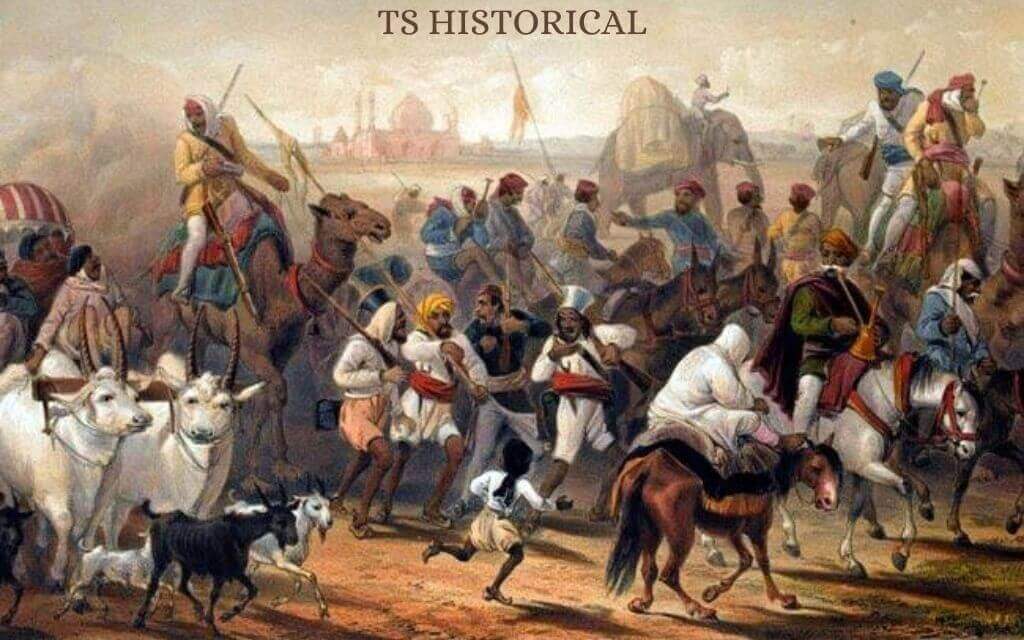
The Indian War of Independence is probably not an accurate name for it. Neither is the Indian Mutiny However, I’ll keep calling it the Indian War of Independence. because I really don’t want to get into nomenclature right now Let’s start at the beginning the British started to establish a presence in India as early as the 17th century
They allied themselves with local governments various princes and rulers allied themselves with them the British were mostly not violent with the governments of India, however in 1757 see the Nawab of Bengal tried to curb the British ambitions and got into a fight with them.
The Battle of Plassey was lost by the Nawab and proved to be a pivotal battle in the history of India soon after that in 1764 they defeated the Allied forces of various rulers of India in the Battle of pox are After this the East India Company even started a collection of taxes in Bengal over the following years They secured the east and the south of India in various Wars notably with the Nawab of Hyderabad and the Maratha Empire.
The Mughals had been crippled and in the north, only one power remained the Sikh Khalsa Empire after the Bloody wars the Sikh Empire was cannibalized by 1850. the conquest of India was mostly complete. There were no threats to the British East India Company anymore various princely states were either formed or allied by the British. This was basically to support their narrative that they didn’t attack anyone who was peaceful with them One example of this was the princely state of Jammu and Kashmir.
This state had been a part of the Sikh salsa Empire but after its end by the British, the Dogra dynasty paid the British a huge sum of money to keep it as their state But rule it under the British government.
Now if this was medieval India, it wouldn’t have been an issue but India in the first half of the 20th century was a place of rising religious tensions when India was partitioned in 1947 many of the Muslim population desired union with the Muslim Pakistan Despite the ruler of Kashmir calling for the independence of his province.
This was not realistic Pakistan invaded and the ruler of Kashmir decided to join India subsequently making Kashmir the scene of the first indo-Pakistan war Therefore the origins of the Kashmir conflict can be traced back to Almohad demos Just talking about the sale of Kashmir a Muslim majority area to a Hindu dynasty All of this conquest had happened in the span of a century There are people alive in 1857 who had heard about the battle of policy and a box are by their grandparents The British were tolerated to a good degree mostly because everyone in India hated everywhere else.
Bengal Army
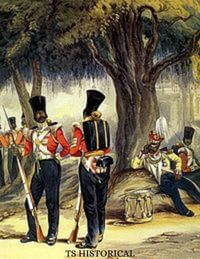
The British military was made up of mainly three presidencies. There was the Bengal army which had an army made of people from Bengal But the British didn’t trust that much because the Bengalis had fought various wars against the British after the annexation of North India.
Download this Article in PDF Format
Get a well-documented version of this article for offline reading or archiving.
Download Now (1690 KB)
They started recruiting more troops from the so-called higher castes Mostly because these higher castes were always fighting each other since there were all big dogs They didn’t want to take crap from each other There was always enough localized conflict there that the British didn’t have to worry about them working together Against the British the Madras army was similarly troops recruited from South India.
The Third Army was the Bombay army Bombay and Madras were smaller armies The Bengal army wasn’t required to fight beyond India if it didn’t want to but the Madras and Bombay war after the completion of India’s conquest.
Burma campaign
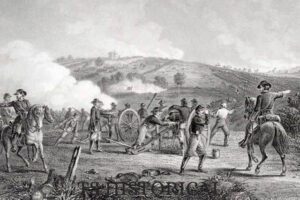
The British Army was looking to other regions such as Burma and China the Indians were okay fighting each other for the British but they didn’t want to get into a ship and go to some other place and fight those people on behalf of An island nation on the other side of the world since the British needed troops.
They decided to change the law where the Madras and Bombay armies were forced to serve overseas They made the law so that new recruits in the Bengal army also had to serve overseas. The higher castes were pissed at this the final spark came in the form of a new type of ammo for the Enfield p53 Rifles a part of this mo had to be bid enough before it was loaded into the rifle.
The ammo was being manufactured in India And soon rumor started that it was greased with animal fat specifically the fat came from cows and pigs Cows were sacred in Hinduism and so couldn’t be eaten and pigs were Haram in Islam so they couldn’t be eaten the rumors were true. Even though by January 1856 the ammo was made free from grease the natives couldn’t get it out of their minds.
This was mixed with rumors that the British wanted to take away the fates of the natives and wanted to convert them to Christianity. The British had already interfered in local religious affairs by for instance ending the tradition of sati and the burning of widows with their dead husbands So the Indians decided to take a stand some sources say that Mangal Pandey’s rebellion as they call.
It was part of a bigger plan to rebellion But Banda under the influence of punk intoxicated decided to do it himself before his comrades were ready. I’m not sure if this is true, but while bonded through first blood and started.
In the war of independence Banda was arrested and hanged in April in the same month There was various smaller mutinies unrest throughout India in barracks across Agra al-abroad and Ambala.
There are various cases of arson however admitted there was a different story the British left-hand Colonel there George Carmichael Smith ordered practice exercises Involving the new cartridge all but five troops refused to do so they were all arrested and put in jail Some for as high as 10 years the next day a Sunday some Indian troops from around the city led by the 3rd Calvary.
Decided to break them out since it was Sunday Most British senior officers were attending church panic broke out and the rebellion was in full swing The rebels headed to Delhi only 40 miles away there. They call that Bahadur Shah Zafar the Mughal Emperor to join them They also murdered as many Europeans and Christians as they could find smaller forces from in and around dilly and immediately joined them.
Almost everyone in Delhi was with the rebels now How does just see no option but to join them as well He held court for the first time in many decades and it should coin in his name the model name still meant a lot to the people of India and a lot of people gathered under their banner despite the fact that.
The Mughal Emperors’ rule extended barely beyond the walls of his castle the British gathered their forces and fought back a Significant portion of their force was made up of six from Punjab six, First of all, hated the models because the Mughals had tried to kill the Sikh religion in its infancy by executing their religious leaders or gurus Secondly, they hated the Easterners the Bengalis and others for having helped the British defeat the Sikh Khalsa Empire.
Siege of Delhi
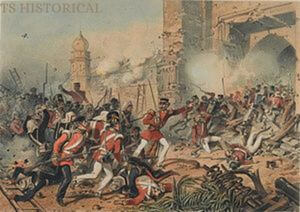
The rebels were able to push back the British at various locations initially such as Haryana and Bihar But they lacked proper leadership despite the fact that they all had technically been under the command of the Mughal emperor they were acting more like independent forces than parts of a larger army Local leaders like Bach Khan and rout to Lara were able to guide their men to some victories But they too were eventually defeated British were also engaged in the Crimean War with Russia at the time.
They were stretched thin and they had to call their troops and gather them in India It took around two months till then the rebels had done some good amount of damage but nothing permanent in June the combined force of the British and their supporters which included the Principality of Kashmir and the Independent kingdom from Nepal met the rebels at but leaky Sarai.
The rebels were defeated and were forced back into the leaf the British laid siege to Delhi starting in early, July They had encircled the city, but the rebels were still able to get reinforcements and supplies. The siege went on like this until on the 14th of August the British forces in Punjab reinforced the besiegers.
The rebels realized that they were in trouble and so they offered terms which were refused by the British in September the British continuously attacked the city eventually they were able to break into the city the casualties were heavy but the British were victorious Mahadev Shah had escaped the Red Fort he was arrested from who – tomb on 20th of September.
Siege of Cawnpore

The sons of Hadassah were executed at the bloody gate Billy had fallen and the Mughal Empire was no more While this was going on in Delhi, there was a different story at Kanpur in Kanpur the rebels had besieged the British in the British there had been forced to endure a siege with little to no supplies the British general their general Villa had good relations with Nana Sahab Bhishma.
He expected Nana Sahab to be kind to him and his men after a few weeks Nana Sahab allowed the British to evacuate on the 27th of June Nana Saab provided boats that would take them wherever they had to go however While the evacuation was underway a commotion happened someone fired a shot and panic broke out the British Outnumbered were massacred thereafter the firing stopped the survivors were rounded up and killed women and children were taken hostage Eventually only four men got out of Kanpur alive.
The British reinforcements arrived there in July and feared the city will be taken soon. The hostages were massacred They weren’t shot as the sepoys refused to kill women and children Instead butchers were called in to kill them this act of unimaginable cruelty became a battle cry for the British Anyone who was a proponent of the Indians was not one anymore some sources say that this was a retaliation of the massacre of Indians conducted by general Neel.
Siege of Lucknow
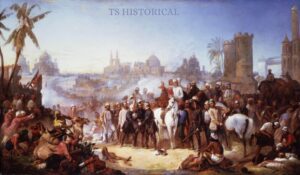
In June when he had Indiscriminately killed thousands of Indians and burned villages around the Grand Trunk Road After taking Kanpur the British forces there moved towards Lucknow Lejano had similarly been in the middle of a siege by the rebels against the British stationed there They’re leaving force wasn’t strong enough to end the siege and were fans forced to join the garrison.
This was called the first relief of Lucknow various smaller battles were fought till the March of 1858 when Lana was finally secured by the British by the end of 1857 North India was mostly secured by the British a line of communication Ran across the country with cities like Delhi Darbar and Agra now firmly under their control.
The British now turned to central India Most of central India had been princely states annexed by the British over the past few decades When the British got busy with the north these states broke into chaos Somerville’s while others started fighting each other head Chauncy.
In June 1857 some British soldiers had taken refuge in a fort to save themselves from the rebels after being assured by the queen of Jhansi That they will be safe and told to evacuate the rebels killed them The role of the Queen is still debated lacking any British authority in the region the Queen raised her banner in rebellion As well.
Central Indian campaign of 1858
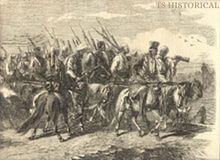
In March 1858 when the central Indian campaign started Chauncey was one of their first goals the British laid siege to it on the 24th of March the fort was well defended, but it was no match for the British Hence, the Queen asked for help from Daddy atop the second-in-command of Nana Sahab, Peshwa He and his army came to their help but was unable to end the siege by 5th of April the British Completely took over Chauncey.
The Queen had escaped the kalbi higher a Cal b2 was soon taken The allied force of the queen of Jhansi Rani Laxmi Bai dotty atop and Rao Sahab the nephew of Nana Sahab was without a fort They had nowhere to go. So they marched on Gwalior which had been loyal to the British on the 1st of June 1858.
They defeated the Maharaja of Collyer and took control of the city. However, this victory was short-lived the British chased them and on the 17th of June at co taki sera He the British defeated the rebels and the queen of Jhansi was killed Tatia top himself remained in rebellion But was eventually betrayed by his men and was executed by the British in April of 1859.
Gwalior was soon taken in the same year Our royal declaration was issued replacing the East India Company with the British Raj the East India Company was officially dissolved There were still smaller rebellions throughout India But the rebellion was more or less dead captured rebels were tried and executed Some by hanging some were blown from cannons the atrocities committed by both sides numerous Maharaja was found guilty on the 29th of March 1859. Peace was officially declared on the 8th of July 1859.
The war was over the British went on to take all of India under their control various princely states were dissolved eventually The three armies were combined into one army the India it took 19 more years till the British finally left in 1947 the country was broken into two states, Pakistan and India Perpetually locked in hostility over crimes committed by the British.
Discover more from TS HISTORICAL
Subscribe to get the latest posts sent to your email.
